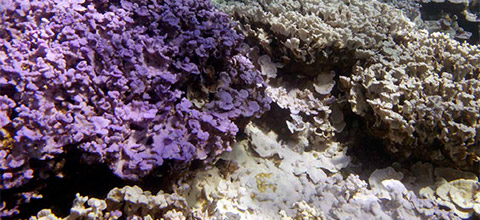
Anthropogenic emissions of greenhouse gases are changing the Earth’s climate in ways that are projected to have significant and far-reaching effects on ecosystems and people. Within a global context, the coral reef and low island ecosystems of the Papahānaumokuākea Marine National Monument (PMNM) are among the places most vulnerable to climate change. The Monument’s northernmost atolls may also be some of the first reef systems globally to be impacted by changing ocean chemistry, thus providing early indications of broader indications to come. Recognizing these likely impacts, the PMNM Monument’s Management Board (MMB) has identified climate change as the most significant threat to this unique World Heritage site, and in collaboration with its partners has developed this Climate Change Vulnerability Assessment (CCVA). The assessment’s purpose of understanding climate change impacts is consistent with a number of federal and state government initiatives and evolving international work programs. The purpose of this document is to provide guidance for PMNM’s response to climate change by providing an in-depth assessment of the likely effects of climate change on the various natural and cultural resources of the Monument. The content of the CCVA was developed through a series of workshops, interviews with PMNM management partners, and a review of the literature. Through this unique process, PMNM not only sought to understand the likely impacts of climate change on Papahānaumokuākea’s resources , but also outlined a research and management agenda in the form of key objectives and targeted strategies for responding to these unprecedented changes. The latter Climate Change Action Plan is in the process of final approval by the Co-Trustees of PMNM, and will be published as a separate document in the future.

